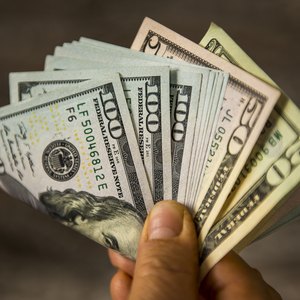
When you buy a money order to send to someone, you'll usually get a receipt or stub containing information, such as the money order's serial number and amount. Keep this receipt for your own records and in case the money order is lost or stolen. If there is a problem with your money order and you don't have the receipt, it can be more difficult and expensive to get the situation resolved.
Tips
While keeping your money order stub is not required, it can provide a number of important benefits. For example, your stub can help provide substantial proof of purchase in the event that the money order is lost or stolen.
How Money Orders Work
Money orders are similar to checks, except that they are prepaid by the person using them to send money. You can buy them from the U.S. Postal Service, which issues its own money orders, and from banks and at retail stores through services such as Western Union and MoneyGram. People who receive money orders can cash them or deposit them in a bank account, similar to a check.
Generally, you will pay cash for a money order, providing the amount of money you want to transfer with the money order, plus a fee to the organization that's issuing it. Then, when you have the money order, you can address it to whoever you are sending it to and sign it, similar to a check. Address it to someone as quickly as possible once you get it, since if it's stolen before you do so, someone else can write their own name on it and cash it.
You'll generally receive a receipt when you buy a money order. Hold on to this receipt in a safe place for your own records, in case you need to verify to someone that you bought the money order and to have in case a money order is lost or stolen. You can also often use the serial number on the receipt to track the money order online, watching to see whether it has been cashed or deposited.
Stolen Money Orders
If you buy a money order and have reason to think it's lost or stolen, contact the institution that issued it immediately. The issuing organization can investigate the issue and, often, replace the money order.
There is usually a fee for this service, and the replacement money order may not be available immediately. If you don't have a receipt for the original money order, you may have to pay a larger fee for the organization to research the information from the original money order before you can get a replacement. If a money order is simply physically damaged, you may also be able to have it replaced.
References
- MerchantCircle: How to Track a Money Order from the Post Office
- USPS: Domestic Money Order
- Western Union: Money Orders
- Money Gram. "How Do I Cancel Money Transfer?" Accessed Feb. 4, 2020.
- Western Union. "How Do I Cancel My Money Transfer and Get a Refund?" Accessed Feb. 4, 2020.
- Western Union. "Western Union Money Orders." Accessed Feb. 4, 2020.
- United States Postal Service. "Money Orders: The Basics." Accessed Feb. 4, 2020.
- MoneyGram. "Money Order Claim Card." Accessed Feb. 4, 2020.
- USPS. "Domestic Money Orders," Accessed Feb. 4, 2020.
- Federal Trade Commission. "Anatomy of a Fake Check Scam." Accessed Feb. 4, 2020.
- HelpWithMyBank.gov. "Answers About Forgery and Fraud." Accessed Feb. 4, 2020.
Writer Bio
Steven Melendez is an independent journalist with a background in technology and business. He has written for a variety of business publications including Fast Company, the Wall Street Journal, Innovation Leader and Ad Age. He was awarded the Knight Foundation scholarship to Northwestern University's Medill School of Journalism.

